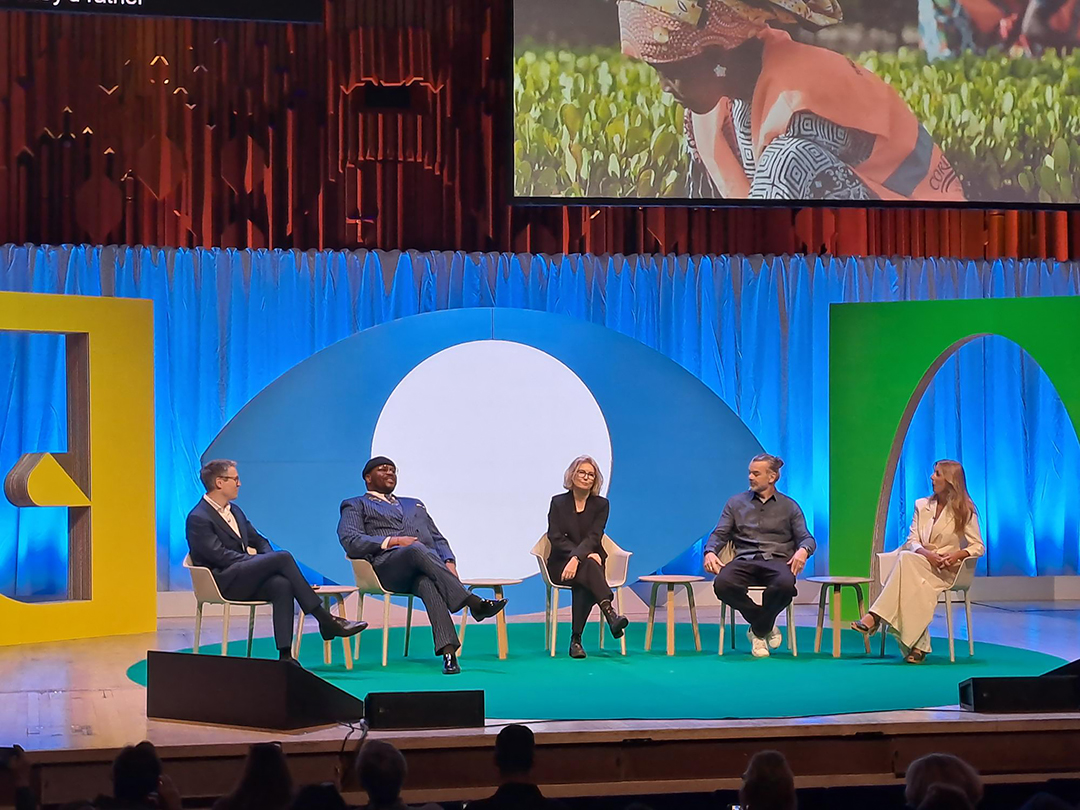How good design benefits people and planet: reflections from the World Design Congress

(September 2025) In this blog, Architecture and Design Scotland's Chief Executive, Jim MacDonald, reflects on the themes and discussions at this year’s World Design Congress, held at the Barbican Centre in London.
The 'Olympics of Design'
Since 1959, the biennial World Design Congress – hosted this year by Design Council on behalf of the World Design Organisation at the Barbican Centre in London – has brought together the international design community and thought leaders from business, research and education to discuss and debate design issues of global importance.
Dubbed the Olympics of Design, complete with an opening ceremony and medals, its significance lies in a unique ability to share experience and connect practice around the planet.
A plea to listen
2025’s edition, across two intense days, offered much to inspire. Between the power of Jane Goodall’s opening words and Minnie Moll’s rallying close, attendees were treated to insights from designers, entrepreneurs, systems thinkers, policy makers, and more.
Common to all was a plea to listen: to communities, to evidence, to the pain of the planet. Other shared themes were the power of collaboration, the strength of connected communities, the need for mission-led work, and the impact of the climate crisis. There was also no hiding the scale of the challenge – Ben Sheppard of Design for Good landing a particularly sobering stat about the non-achievement of the UN’s Sustainability Goals.
“We have the power to make a difference”
A standout speaker was climate justice activist Tori Tsui, who relayed with measured fury the heartbreaking suffering that arises when we stop listening, turn away, and allow ourselves to become divided. Everyone was moved by her words – some to tears, all to cheers – but crucially, she observed that together we can bring about change. Uncomfortable though her words were, they resonated strongly in the room.
As did those of Indy Johar, urging us to wake up to the frightening reality of a warming planet, of Kate Raworth and Mariana Mazzucato calling for a redesign of the economy, and of Teman Evans encouraging us to put curiosity and diversity at the heart of practice.
"Be curious. Take time to understand diversity."
The Congress reaffirmed the importance of an outcomes-based approach, collaboration, user-centred design, and of creative thinking to make people’s lives and the planet better. It also underscored the power we each have to make change happen and the responsibility to do so.
For A&DS, this means using our power to champion the benefits to people and planet of good design, to help remove barriers to good design, and to work tirelessly to create more opportunities for designers to thrive.
The focus of this work will be capital investment by Scotland’s public sector, the delivery of much needed housing, and developing the untapped potential of our design sector. Achieving all of this will not be easy, but the Congress showed what is possible if we are serious about turning policy rhetoric into lived reality.
